Books on Armenian Art in Watson Library
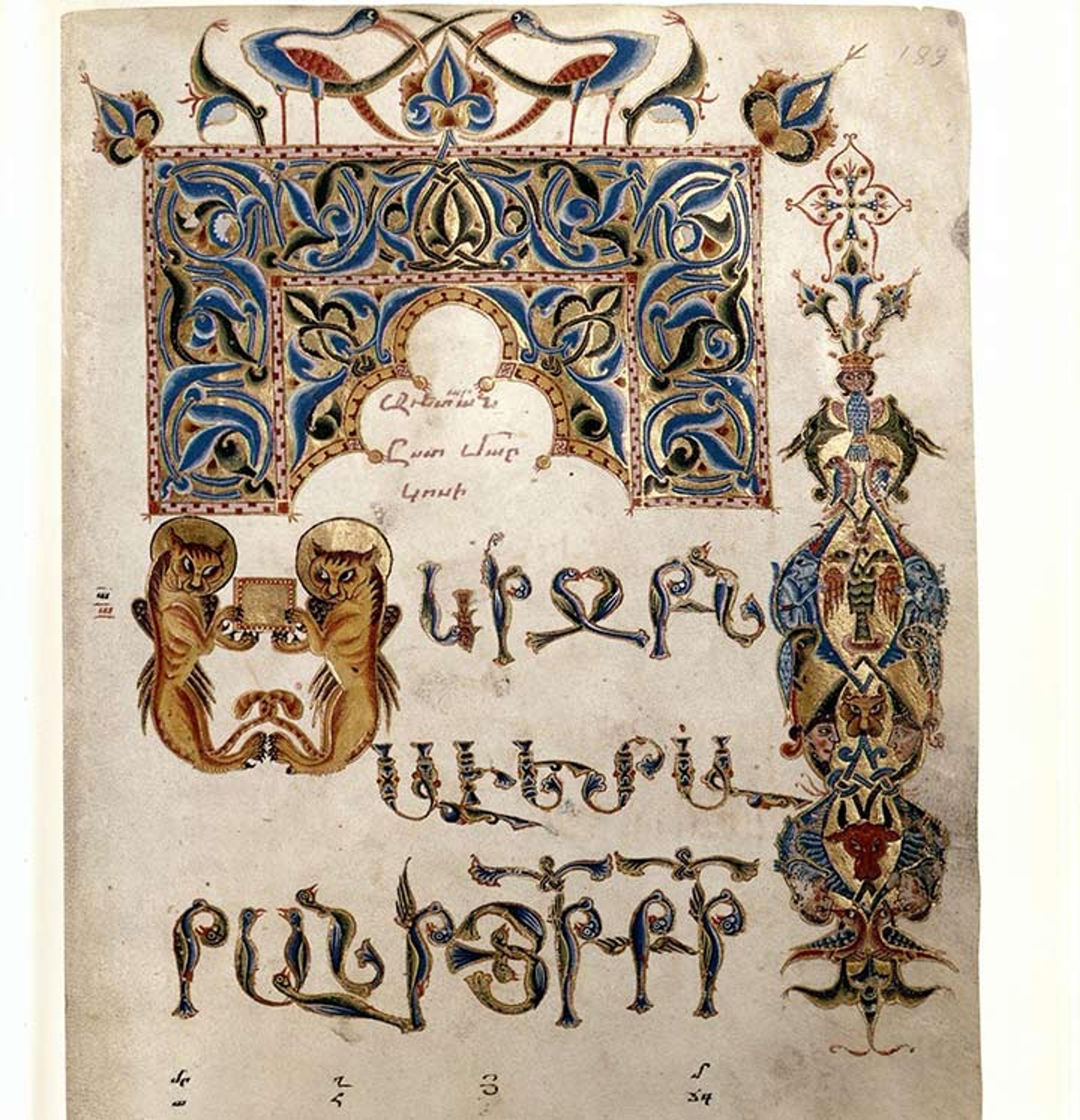
Mathews, Thomas F., and Alice Taylor. The Armenian Gospels of Gladzor: The Life of Christ Illuminated. Los Angeles: J. Paul Getty Museum, 2001.
«Armenia has received an increasing amount of celebrity attention lately, from the Kardashian family's visit last April to the most recent trip made by Conan O'Brien. One reason for the attention is that 2015 marked the centennial of the Armenian Genocide, prompting one to reflect on the cultural, literary, and artistic traditions that were perilously close to being lost.»
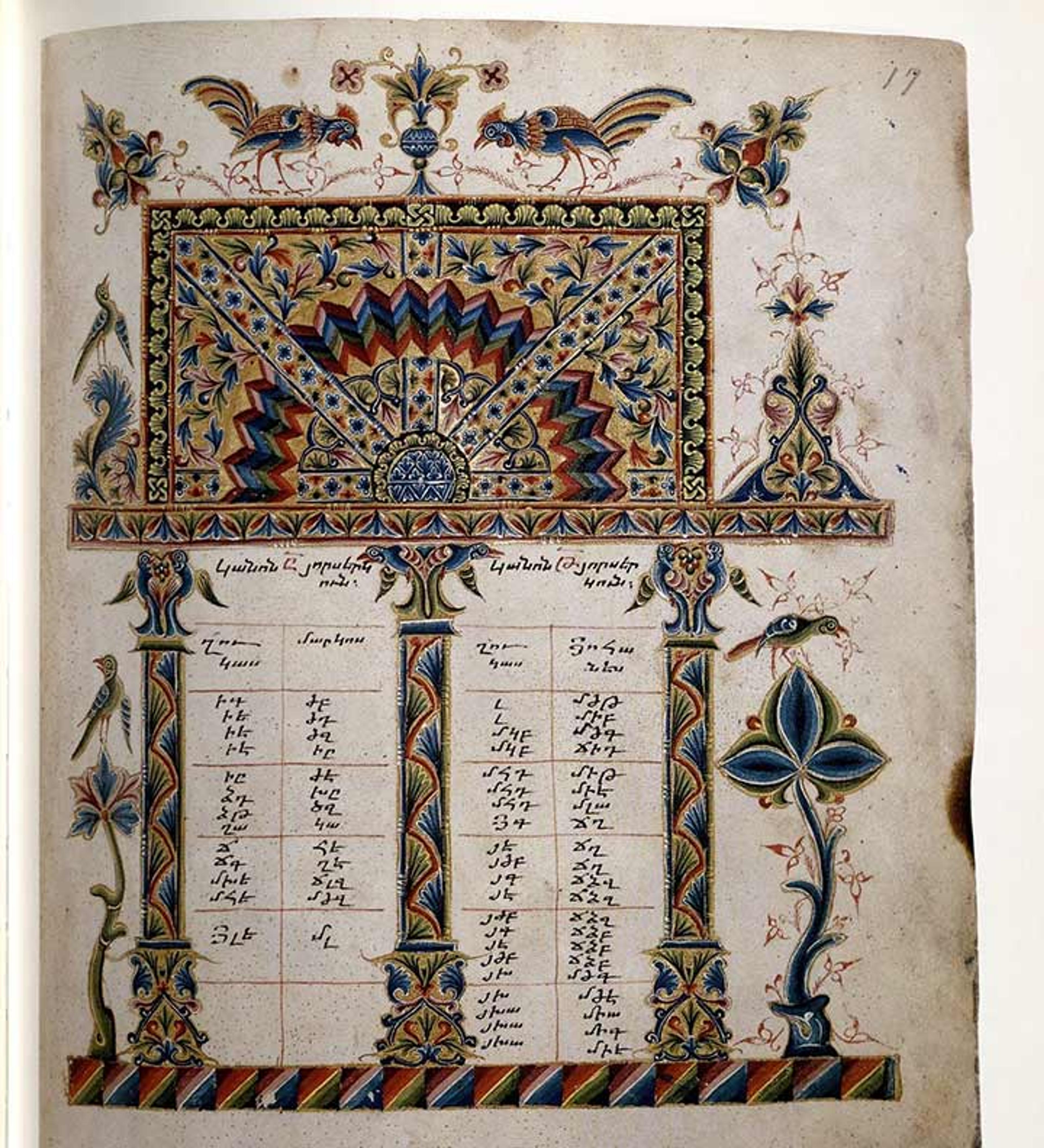
Mathews, Thomas F., and Alice Taylor. The Armenian Gospels of Gladzor: The Life of Christ Illuminated. Los Angeles: J. Paul Getty Museum, 2001.
The history of Armenia, one of the first nations to adopt Christianity, is closely bound with books and language. Armenian is an Indo-European language and has an alphabet that consists of 38 letters. The driving force behind the development of the Armenian written alphabet was the desire to have a Bible that would allow the Armenian people to study and pray in their own language.
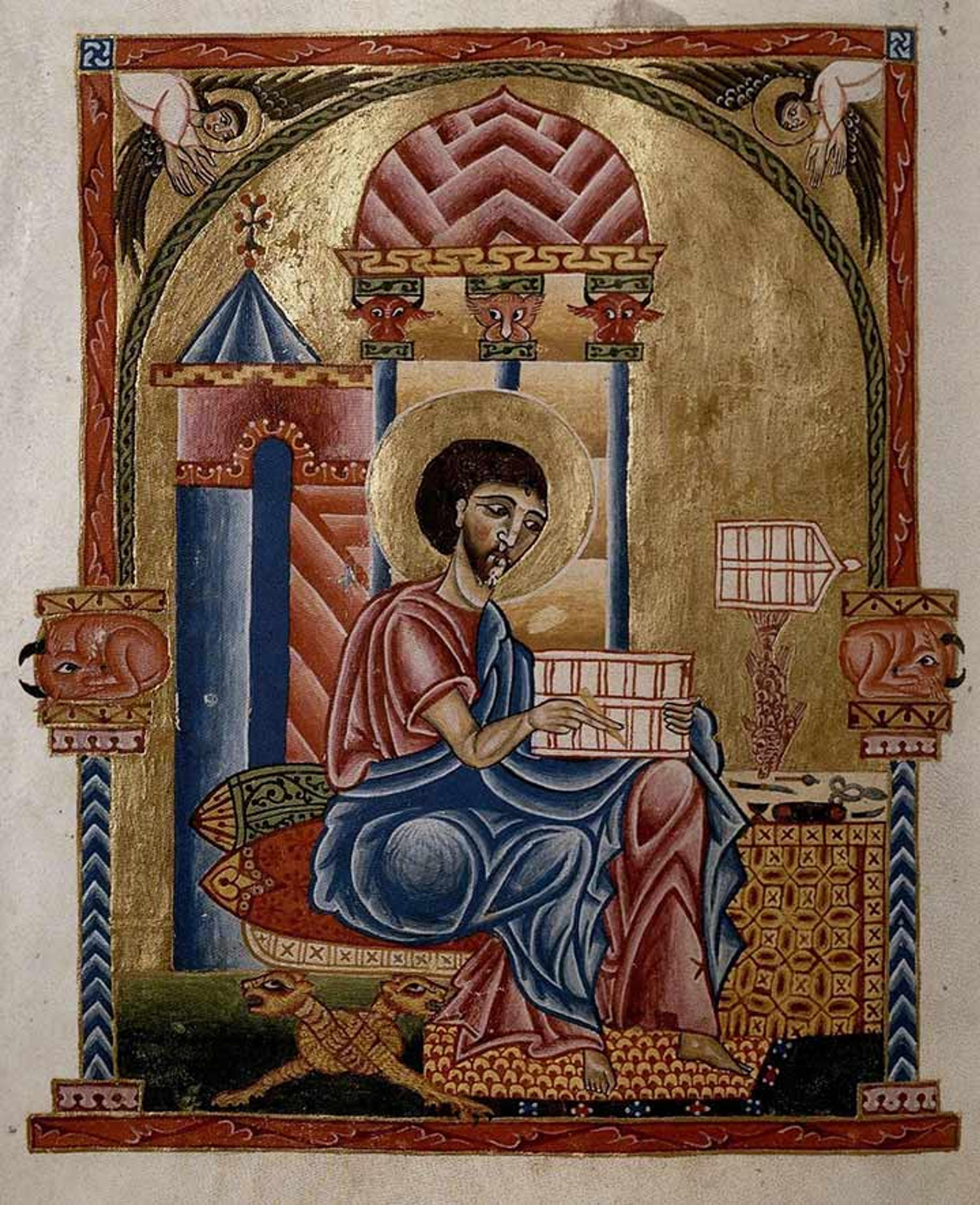
Mathews, Thomas F., and Alice Taylor. The Armenian Gospels of Gladzor: The Life of Christ Illuminated. Los Angeles: J. Paul Getty Museum, 2001.
Books have a special significance in Armenian culture and are regarded with reverence. Manuscripts were guarded as important objects and referred to as "tan surb" (տան սուրբ), meaning "saint of the home." These precious books were more than just a source of information—they were also associated with protection and prosperity.
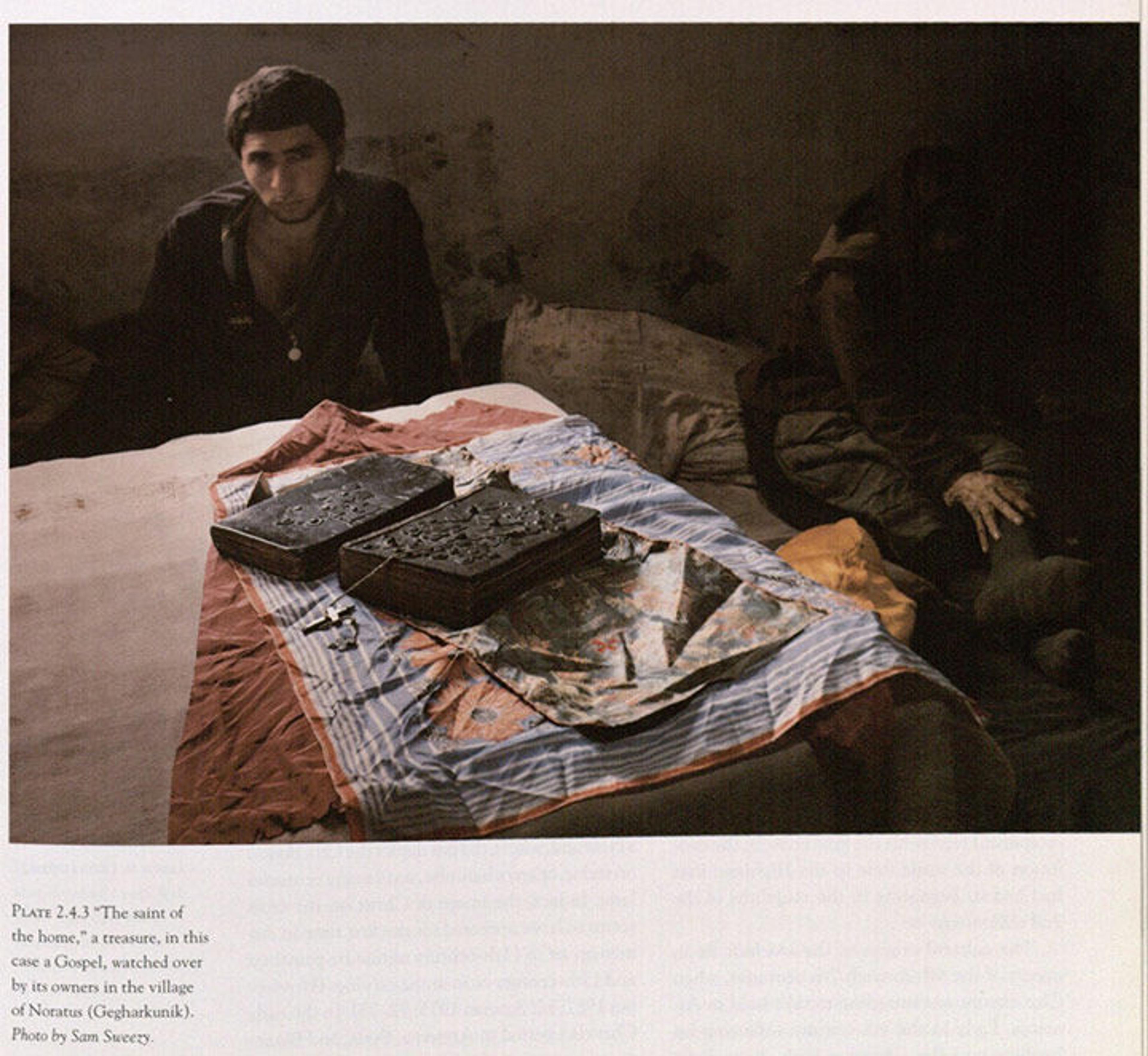
Plate 2.4.3 from Armenian Folk Arts, Culture, and Identity. Bloomington and Indianapolis: Indian University Press, 2001.
Watson Library has a growing collection of resources on different types of Armenian art, many of which highlight the beauty and intricacy of Armenian illuminated manuscripts. For example, this facsimile copy of The Miniatures from the Evangelistary of Queen Mlke shows what could have been used as canon tables. Birds and other zoological forms are commonly found in Armenian miniature decorations.
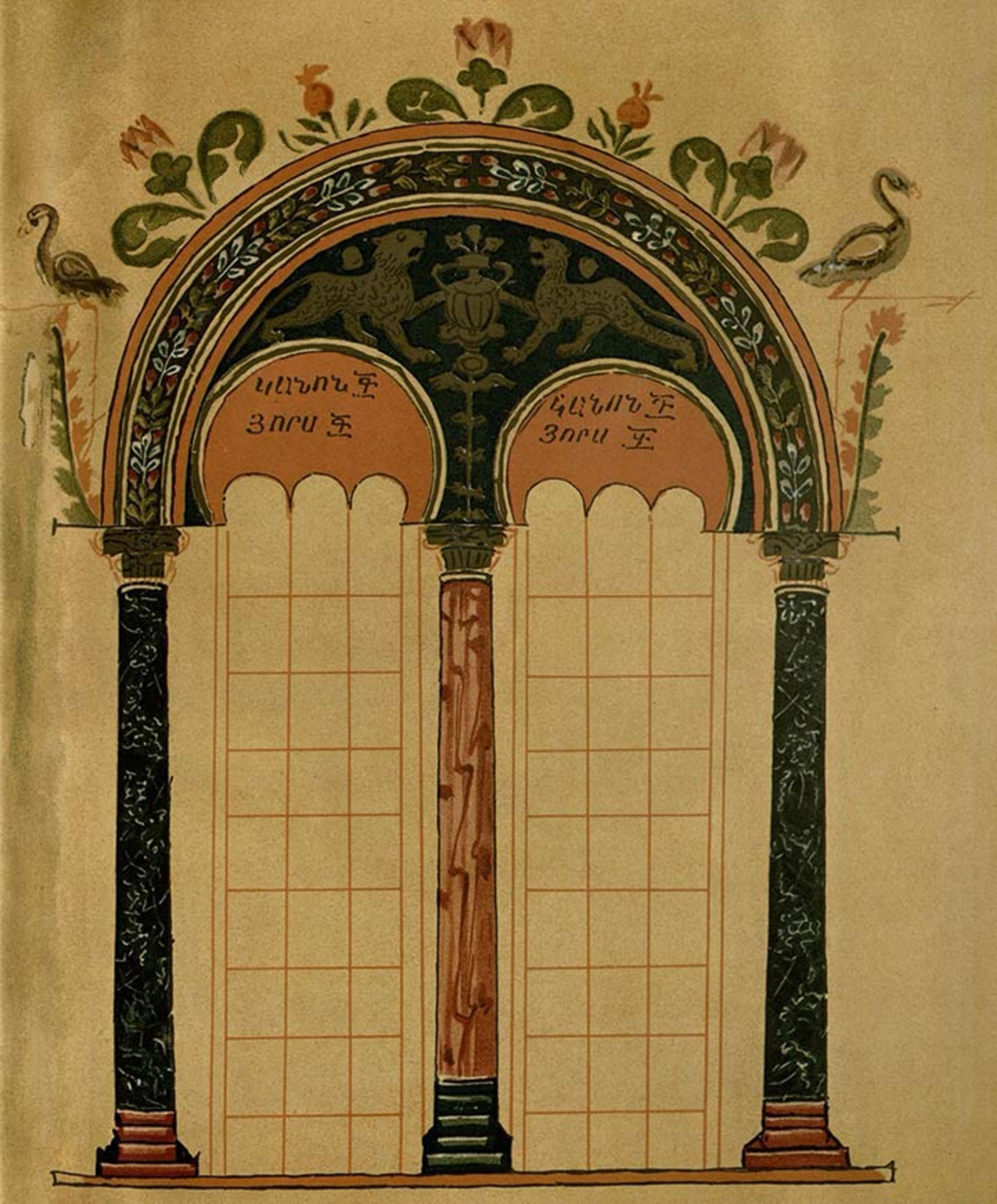
Canon table from The Miniatures from the Evangelistary of Queen Mlke. Venice: San Lazzaro, 1902.
For an exclusive look at two of The Met's Armenian manuscript pages that are not currently on display, check out this YouTube video featuring Dr. Helen Evans, the Mary and Michael Jaharis Curator for Byzantine Art in The Met's Department of Medieval Art and The Cloisters. The video gives an up-close examination of a leaf from a manuscript with the four evangelists and a page from the Gospel of John.
I have always been drawn to the customs and art of the Armenians; some I've learned through my family and some I've studied academically. Watson Library is a treasure trove of information on Armenian art, and I've enjoyed exploring our collections.
Annalise Welte
Annalise Welte is a former senior library associate in the Thomas J. Watson Library.